Propeller Shaft For Mercury Outboard
Unless you're a professional propeller mechanic, determining the proper prop shaft for mercury outboard isn't always easy.propeller shaft for mercury outboard However, you can make a big difference in your boat's performance by understanding the basic characteristics that every prop is designed to possess.
The key dimensions of any propeller are diameter and pitch.propeller shaft for mercury outboard These are usually stamped on the propeller hub or barrel, referred to as the hub center, in a format such as "diameter x pitch." The diameter refers to the distance from blade tip to blade tip as the prop rotates. The pitch is the angle, measured in degrees, at which the blades slant away from the propeller hub. A lower-pitch prop has more drag and less traction, while a higher-pitch prop has the opposite effect.
Propellers have one other dimension that's often overlooked, directionality. You can quickly test whether a particular prop is right- or left-hand by simply holding the hub of the propeller in your hand with a thumb placed on the blade. If the thumb rests comfortably, it's a right-hand prop; if the thumb is uncomfortable, it's a left-hand prop.
Another factor to consider is the number of blades on a prop. A four-blade propeller, for instance, offers better traction because there are more blade surfaces against the water, improving hole-shot acceleration and low-speed pulling power. On the other hand, it requires more engine RPM to achieve top-end speed.
Cupping, or adding a curved lip to the trailing edge of the propeller, helps the blades cut through the water with greater ease. This improves traction and reduces prop slip and ventilation, but may cause the motor to rev higher at wide open throttle (WOT).
Choosing the correct propeller size is essential to maintaining optimal performance. If a prop is too small, your engine will struggle to reach its designed rpm range at WOT, while a prop that's too large will overload the motor and cause premature wear and damage.
The direction in which the propeller and shaft rotate is also important. Most single-engine outboards rotate their propellers clockwise, while dual outboards will use a counter-clockwise prop to balance the two engines. Make sure the prop you select is designed to rotate in that direction, especially on a dual outboard set-up.
Most propellers are made of aluminum or stainless steel. Aluminum props are less expensive and work well on most boats, while stainless steel props provide superior durability and performance. Stainless steel propellers are also easier to repair than aluminum props, and they don't weaken over time. Stainless steel is also lighter than aluminum, further reducing the stress on the prop shaft and the engine.
